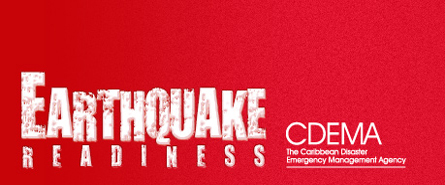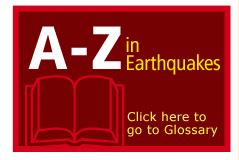: strtotime(): It is not safe to rely on the system's timezone settings. You are *required* to use the date.timezone setting or the date_default_timezone_set() function. In case you used any of those methods and you are still getting this warning, you most likely misspelled the timezone identifier. We selected the timezone 'UTC' for now, but please set date.timezone to select your timezone. in
: date(): It is not safe to rely on the system's timezone settings. You are *required* to use the date.timezone setting or the date_default_timezone_set() function. In case you used any of those methods and you are still getting this warning, you most likely misspelled the timezone identifier. We selected the timezone 'UTC' for now, but please set date.timezone to select your timezone. in
|
Emergency Management Officials |
|
Additional ways to Reduce Earthquake Damage and Casualties
- At the REGIONAL level, Emergency Management Officials should:
- Develop a model EQ planning process.
- Develop a Regional Earthquake Support Plan with an appropriate medical/health annex.
- Initiate an in-depth assessment of regional emergency telecommunications using the earthquake scenario as a benchmark and focusing on states or territories more at earthquake risk.
- Revise model disaster management legislation to better align contents with the enhanced CM framework (this is underway). Clarify roles of NDO and other actors in national emergency management system for different emergencies and in the four phases of the DRM cycle (preparedness. response, recovery and mitigation).
- Enhance earthquake readiness capacity by establishing a regional USAR Framework within the existing LSAR Regime.
- Assist regional and national building Code development and implementation efforts.
- Promote (e.g., through the RBS development project) the creation or inclusion of a model legislation for National Building Codes.
- Support CARICOM's initiative to develop the RBS by partnering with CROSQ to promote integration of CDM requirements in the RBS, including, but not limited to, the following considerations:
- Priority consideration for critical structures; and
- Seismic proofing of structure critical contents and equipment
- Promote the incremental mandatory building Code concept by assisting in identifying priorities.
- Ensure that the upcoming CDERA MDML project has strong linkages to RBS and National Building Codes.
- Support training of construction permit granters, building inspectors, designers, engineers, builders and construction workers throughout the region, and develop related control measures for the training and qualification of participants.
- Develop a model seismic zonation map for the Greater Caribbean Region based on global comprehensive and consistent scientific studies for the entire Greater Caribbean Region, to avoid inconsistency at the borders between different states. The seismic zonation maps should be developed using internationally accepted methods, up-to-date data and transparent and repeatable procedures and be revised periodically.
- At the NATIONAL level, Emergency Management Officials should:
- Lobby policy makers to ensure that adequate resources are available for earthquake mitigation and response.
- Ensure that policy makers are adequately and continuously informed.
- Identify structures of critical importance for earthquake response and catalogue them in terms of vulnerability, for: retrofitting priority, and, building to new seismic Code standards. In the case of many older structures, the option to retrofit buildings to an updated Code may not be feasible or economical. The importance of the structure, in terms of its potential to cause casualties during an event, or the criticality of its use after an event must be weighed in the retrofit equation.
- Identify structures of high occupancy requiring special attention in terms of earthquake preparedness and response.
- Promote the formation of national stakeholder working groups to develop model land use planning and building ordinances from the proposed National Building Codes.
- Partner with National Standards Agencies (where they exist) to support the RBS initiative and implementation of the regional recommendations.
- Address the role of the general public in initial search and rescue efforts. Potential earthquake casualties could be reduced through an appropriate earthquake-related public awareness programme.
- Review national earthquake response plans with particular emphasis on the medical and health services. Identify evacuation routes and safe nearby congregation areas.
- Work with officials of the local fire, police, and emergency medical services departments; utilities; hospitals; emergency management office; and Red Cross to prepare and disseminate guidelines for people with mobility impairments about what to do if they have to evacuate.
- Standardise earthquake & tsunami signs across the region to indicate evacuation zones, evacuation routes for pedestrians and vehicles, tsunami safe locations and information boards and signs about previous tsunami.
- Create plans for mass evacuations.
- Arrange for local newspaper or radio or television stations to:
- Do a series on the dangers of tsunamis and floods.
- Do stories featuring interviews with local officials about land use management and building Codes in floodplains.
- Highlight the importance of staying informed about local conditions.
- Run public service advertisements about how to protect lives and property in a tsunami. Periodically inform the community about local public warning systems.
- Hold annual tsunamis workshops in communities.
- Distribute material to local jurisdictions for school and the general public.
back to top
|













